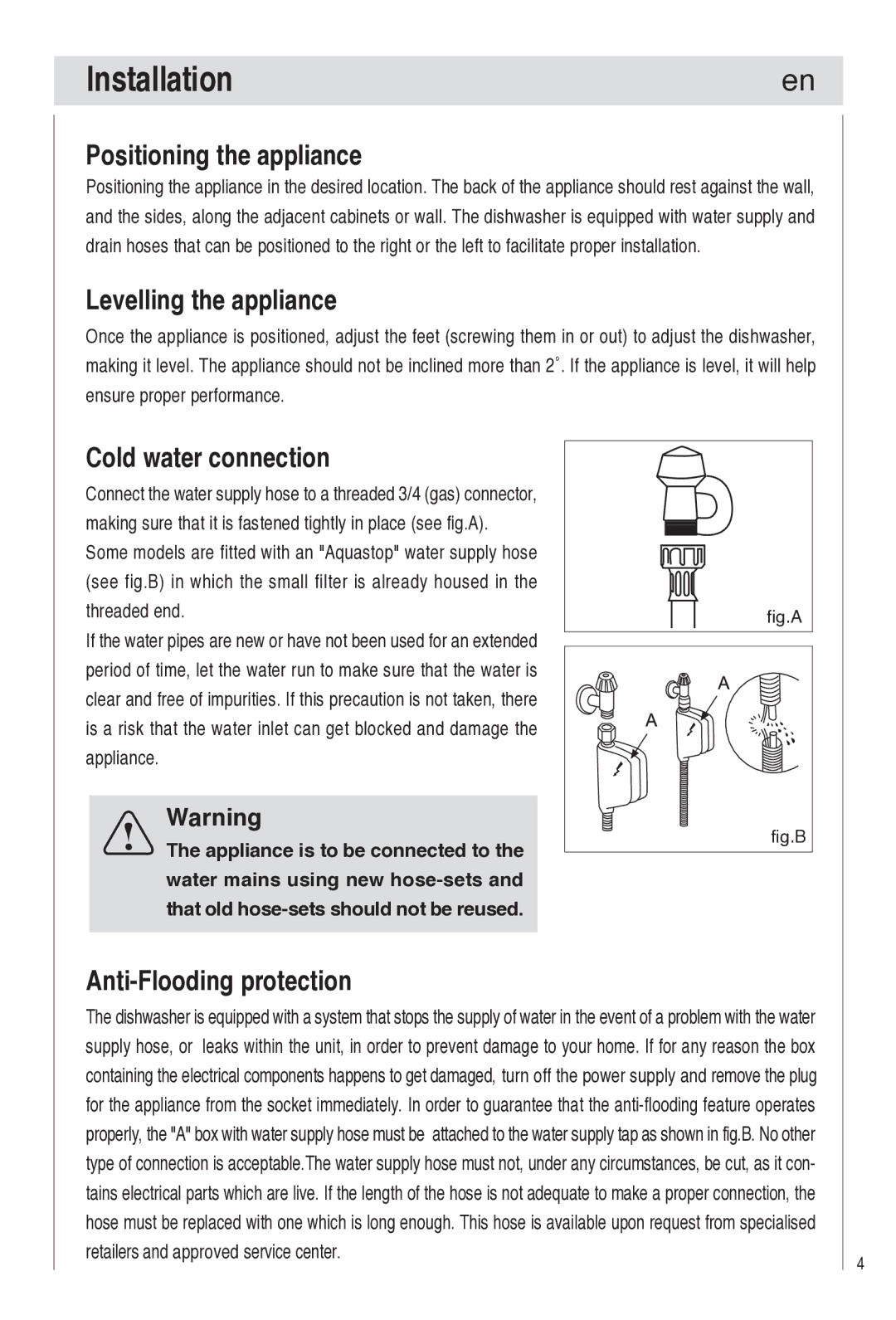
Installation | en |
|
|
Positioning the appliance
Positioning the appliance in the desired location. The back of the appliance should rest against the wall, and the sides, along the adjacent cabinets or wall. The dishwasher is equipped with water supply and drain hoses that can be positioned to the right or the left to facilitate proper installation.
Levelling the appliance
Once the appliance is positioned, adjust the feet (screwing them in or out) to adjust the dishwasher, making it level. The appliance should not be inclined more than 2˚. If the appliance is level, it will help ensure proper performance.
Cold water connection |
| |
Connect the water supply hose to a threaded 3/4 (gas) connector, |
| |
making sure that it is fastened tightly in place (see fig.A). |
| |
Some models are fitted with an "Aquastop" water supply hose |
| |
(see fig.B) in which the small filter is already housed in the |
| |
threaded end. | fig.A | |
If the water pipes are new or have not been used for an extended |
| |
period of time, let the water run to make sure that the water is |
| |
clear and free of impurities. If this precaution is not taken, there |
| |
is a risk that the water inlet can get blocked and damage the |
| |
appliance. |
| |
Warning | fig.B | |
The appliance is to be connected to the | ||
| ||
water mains using new |
| |
that old |
|
Anti-Flooding protection
The dishwasher is equipped with a system that stops the supply of water in the event of a problem with the water supply hose, or leaks within the unit, in order to prevent damage to your home. If for any reason the box containing the electrical components happens to get damaged, turn off the power supply and remove the plug for the appliance from the socket immediately. In order to guarantee that the
4
